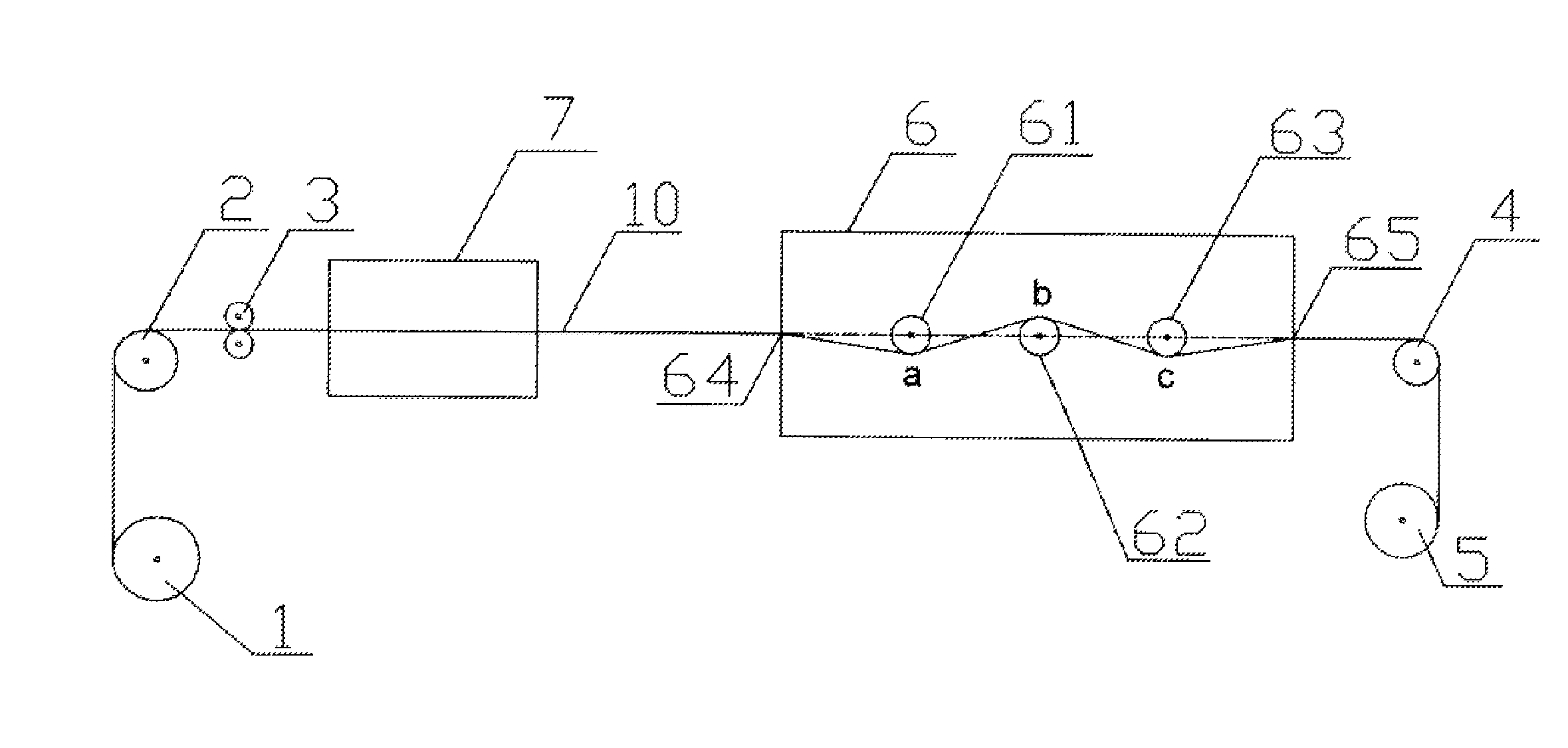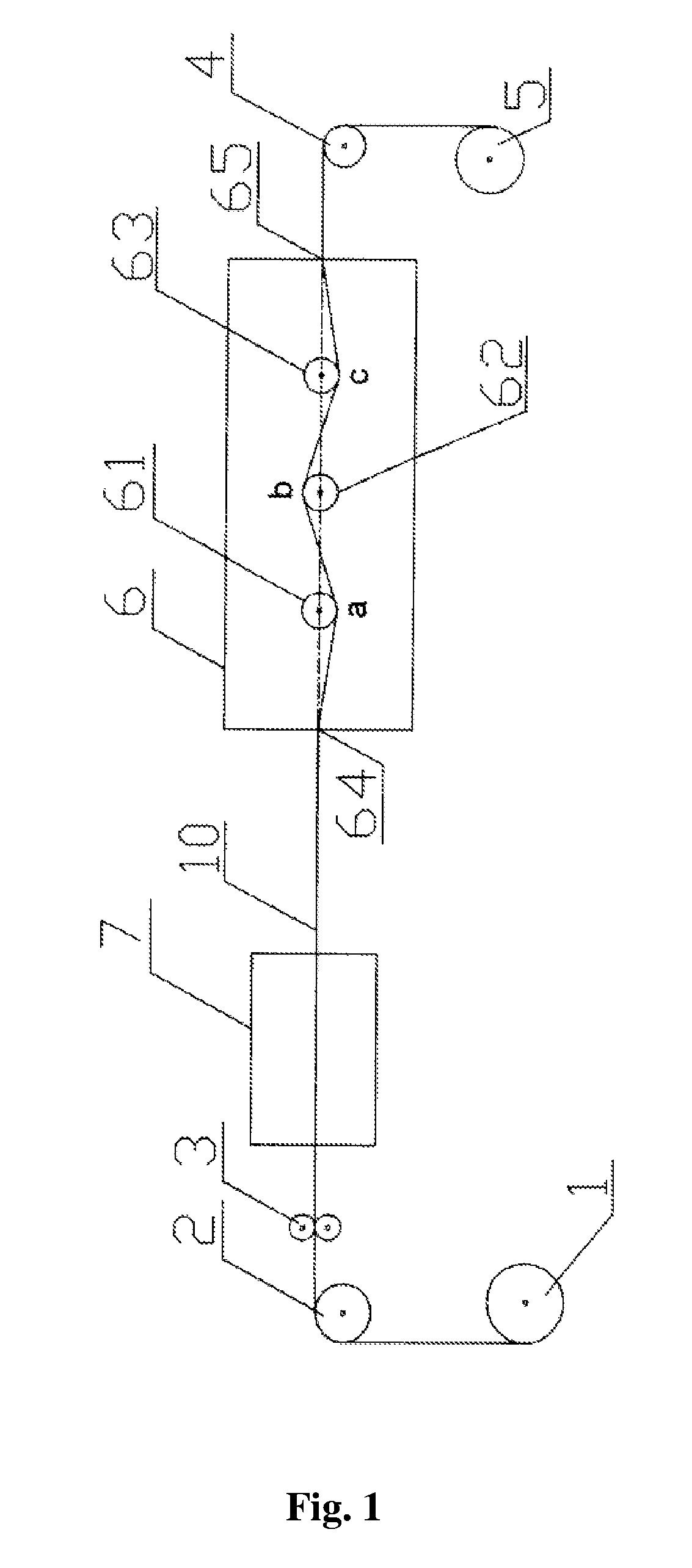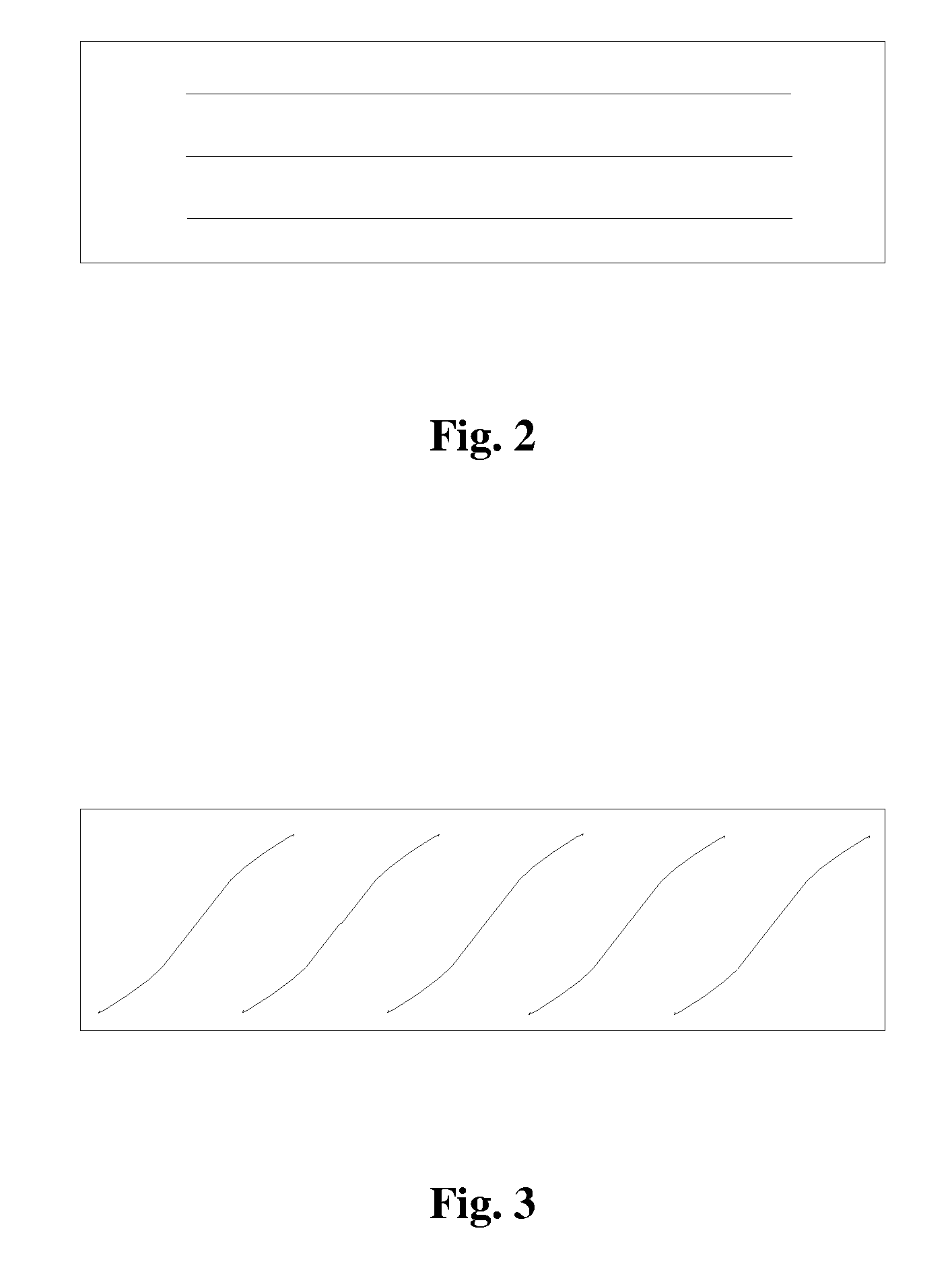Device and method for molding bistable magnetic alloy wire
a technology of magnetic alloy wire and device, which is applied in the manufacture of contact members, manufacturing tools, other domestic objects, etc., can solve the problems of inability to achieve continuous production, low magnetism of processed alloy wire, and relatively small deformation on the surface, so as to improve facilitate the control of the magnetic properties of alloy wire. , the effect of improving the deformation uniformity of alloy wir
- Summary
- Abstract
- Description
- Claims
- Application Information
AI Technical Summary
Benefits of technology
Problems solved by technology
Method used
Image
Examples
example 1
[0036]An alloy wire consisted of 49.1% Fe, 43.1% Co, 7.8% V, and a diameter of the alloy wire was 0.25 millimeters. Firstly, the alloy wire was continually processed 5 times by heat treatment (i.e. being heated up firstly and then being cooled down by air) using a radiant-type furnace, at a heat processing temperature of between 500 and 1000° C. Then, the alloy wire was processed by cold treatment of mechanical twisting: a moving speed of the alloy wire is 5 m / min, and a repeated twisting portion was composed of a forward twisting portion and an opposite twisting portion both with a length of 10 cm, and angular speeds of the two portions are 1200 loops / min. The easy magnetization direction of the bistable magnetic alloy wire was parallel to an axis of the alloy wire and was linearly-distributed (as shown in FIG. 2).
[0037]If a zero power consumption transducer made by the above material is driven by a symmetrical alternating magnetic field, the alloy wire will be magnetically switche...
example 2
[0038]An alloy wire consisted of 49.1% Fe, 43.1% Co, 7.8% V, and a diameter of the alloy wire was 0.25 millimeters. Firstly, the alloy wire was continually processed for 5 times by heat treatment (i.e. being heated up firstly and then being cooled down by air) using a radiant-type furnace, at a heat processing temperature of between 500 to 1000° C. Then, the alloy wire was processed by cold treatment of mechanical twisting: a moving speed of the alloy wire is 2 m / min, and a repeated twisting portion is composed of a forward twisting portion and an opposite twisting portion both with a length of 6 cm, and angular speeds of the two portions are 1800 loops / min. The easy magnetization direction of the bistable magnetic alloy wire was parallel to an axis of the alloy wire and was linearly-distributed (as shown in FIG. 2). If a zero power consumption transducer made by the above material is driven by a symmetrical alternating magnetic field, the alloy wire will be magnetically switched if...
example 3
[0039]An alloy wire consisted of 49.1% Fe, 43.1% Co, 7.8% V, and a diameter of the alloy wire was 0.25 millimeters. Firstly, the alloy wire was continually processed for 5 times by heat treatment (i.e. being heated up firstly and then being cooled down by air) using a radiant-type furnace, at a heat processing temperature of between 500 to 1000° C. Then, the alloy wire was processed by cold treatment of mechanical twisting: a moving speed of the alloy wire was 0.5 m / min, and a repeated twisting portion was composed of a forward twisting portion with a length of 3 cm and an opposite twisting portion both with a length of 6 cm, and angular speeds of the two portions were 3000 loops / min. The easy magnetization direction of the bistable magnetic alloy wire was spirally-distributed (as shown in FIG. 3). If a zero power consumption transducer made by the above material is driven by a symmetrical alternating magnetic field, the alloy wire will be magnetically switched if a magnetic inducti...
PUM
| Property | Measurement | Unit |
|---|---|---|
| length | aaaaa | aaaaa |
| length | aaaaa | aaaaa |
| angular speeds | aaaaa | aaaaa |
Abstract
Description
Claims
Application Information
 Login to View More
Login to View More - R&D
- Intellectual Property
- Life Sciences
- Materials
- Tech Scout
- Unparalleled Data Quality
- Higher Quality Content
- 60% Fewer Hallucinations
Browse by: Latest US Patents, China's latest patents, Technical Efficacy Thesaurus, Application Domain, Technology Topic, Popular Technical Reports.
© 2025 PatSnap. All rights reserved.Legal|Privacy policy|Modern Slavery Act Transparency Statement|Sitemap|About US| Contact US: help@patsnap.com



